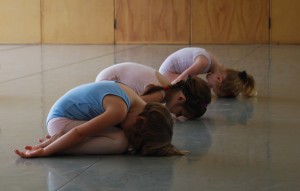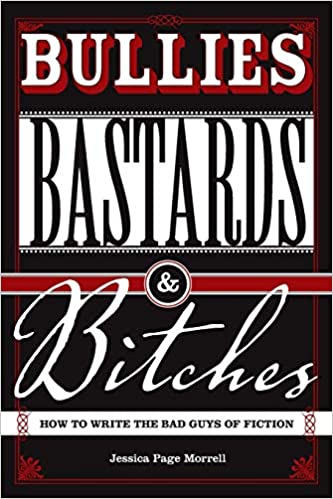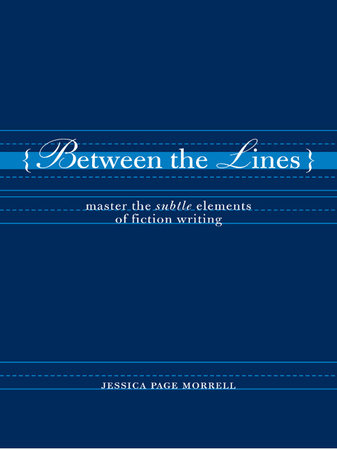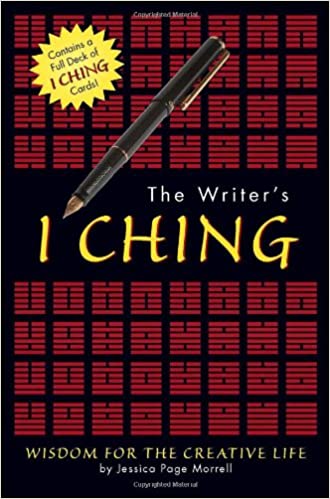 Writing as Practice
Writing as Practice
Writing becomes an act of compassion toward life, the life we so often refuse to see because if we look too closely or feel too deeply, there may no end of our suffering. But words empower us, move us beyond our suffering and set us free.~ Terry Tempest Williams
Archeologists have postulated that writing emerged in many ancient cultures around the world, but most often the Sumerians of long-ago Mesopotamia, now Iraq, are credited with creating it about 3500 BCE. Printed on clay tablets, this meant that news, ideas, and business transactions could be recorded or even travel in a region without relying on the messenger’s memory. While there were cave drawings and other means of communicating spanning back millenniums, when written language came into being it changed the world. Since its invention people have struggled to use these finite marks to create understanding and stories.
I was thinking about the power of language when I spent a day in Victoria B.C. with a friend. As we approached Vancouver Island on a ferry under azure skies, the sun winked off the water, the trees flashed shades of emerald, and everything seemed bejeweled and new. It was a magical day because Victoria is a magical place and at some point as I was gazing out at the Strait of Juan de Fuca, my friend asked why I hadn’t brought along a camera. And I answered simply that as a writer I’m always snapping word photos and storing them away. Now, I have nothing against photography and may some day enroll in a photography class, but I’m all for writers going through their days as if everything they see and do is part of their writing practice.
The word ‘practice’ has sort of a woo-woo connotation I realize, usually used by Buddhists or people describing a spiritual practice, yoga, or mediation. The idea is that your healthy habits become a central part of daily life and affect all you do. Your practice becomes deliberate, sustaining, and strengthening. My practice is writing. From this bedrock I capture the world I encounter and it teaches me to be more reflective and aware and centered. Writing as practice is walking a middle path and is a meld of learning and gathering, stoked by imagination and memory. Like meditation, it forces me to train my mind, particularly to stay focused on a single task, for me as difficult as climbing in the Himalayas, not that you’ll ever find me huffing behind a Sherpa guide. Also, and I don’t quite know how to explain this, but instead of searching the world for a source of joy, my writing becomes my source of joy.
My practice also means that I’ve opened a channel for the words that rise from my heart and unconscious. As I mentioned I see the world through the eyes of a writer and as part of my practice, I read widely; I nurture friendships with other writers; I take long walks where I pay a lot of attention to the sky and signs of the passing seasons, honing my awareness and tucking all I see and hear and smell and dream into a writer’s notebook. But best of all, writing gives me a place to return to again and again and it never fails to calm and inspire. It’s as if my daily writing practice positions me in a large-bottomed boat amid a stormy sea and somehow, I always reach shore.
It seems that in meditation (I’m not good at it so can only speculate here) you watch your thoughts emerge and swim across the mind’s inner screen and then release the thoughts. Writing might take an opposite approach—a way to capture what enters the mind as well as all that shows up in daily life. It’s a way of listening in, of allowing inspiration to arrive, like opening the door to dear friends arriving for a dinner party.
And if you invest in writing as a practice it seems to me that it’s the opposite of straining, striving, fighting, and fretting over every idea or word. It’s more of an immersion based on trust rather than wrestling words onto the page. In the common parlance practice also means repeating a behavior again and again as in learning piano chords or a tennis swing until the behavior feels natural and flawless and sure. So naturally the more you write the deeper your practice.
Most mornings the first thing I do is switch on my laptop, iPad, or grab a notebook to write longhand. If I’m writing longhand I’m often capturing a dream or writing a poem, trying to mine the rich morning territory when you emerge from sleep. Some mornings I start the day by editing and pruning a section from the previous day. Some mornings I draft a new piece or chapter. Most days I move back and forth between a new work and an ongoing project. And I have come to see my daily practice as powerful as meditation, as calming as prayer, and I rarely deviate from it even when traveling or on vacation.
So here is the mojo that I believe you can gain from using writing as a practice: It helps you gain conscious control of your mind. It makes the world and your cares disappear. It helps place worries and problems in perspective. It trains you to live with a great deal of awareness and gratitude and see a narrative everywhere you look. Like an explorer or researcher you see every project as a means to start fresh and to learn something new.
It forces you to see other people and things from a fresh viewpoint. It connects you to parts of the self not always accessible in daily dealings.
Writing as practice is a constant mind set, and opens a door to the huge world of knowing within. Translating what you know, what prickles your skin, or makes you weep isn’t easy. But with practice your translations come to life through language and the emotions you can stir with it. And that comes from ever deepening, always thinking about what you’re seeing, and always questioning, always remaining open.
 Creative all the Time
Creative all the Time
The most beautiful experience we can have is the mysterious. It is the fundamental emotion which stands at the cradle of true art and true science. Whoever does not know it and can no longer wonder, no longer marvel, is as good as dead, and his eyes are dimmed. ~ Albert Einstein
If while strolling down the gaudy midway of a county fair you stumbled onto a barker who claimed he had the key to making you more powerful, passionate, and alive, would you pause and listen to his sales pitch? If the spiel continued and he claimed that you’d gain problem-solving abilities, obtain more energy, learn to recognize possibilities instead of problems, get more enjoyment out of everyday life, and discover a sense of purpose, wouldn’t you line up and wonder about the new phenomena? If all this magic was contained in a pill, there would be a mad rush to buy this Nirvana in a bottle. The much-touted Viagraâ would look like a yawn in comparison. Yet there is such a “cure” only it doesn’t come in a pill. It is called creativity and as you know, is the source for all writing.
Creativity is really a simple concept. It means looking at objects, problems, and ideas in new ways. It means spotting connections that you once overlooked and viewing the world not as everyone else does, but with a fresh vision. In fact, creativity is such a common activity that it doesn’t belong to a few chosen geniuses, but to all of us. And most of all, creativity is a key to well being because it brings meaning into our lives and flow into our everyday activities. When creativity is central to our lives, we laugh more, enjoy more. It enflames us with passion and inspiration.
In short, creativity defines what is delicious and special about being human and is the force behind everything devised by mankind. Because while our primate cousins have remained in the jungle munching on grubs, we’ve launched satellites and sent men and women to far galaxies; decorated the Sistine Chapel with frescoes; built microscopes and telescopes; invented radio, television, and computers; painted Faberge eggs and batik fabric; built Scottish castles and Sioux teepees; snapped photos and composed velvet paintings; originated cubist painting, Thai cuisine, and carbon dating techniques.
We are all born innately creative. We tilted through childhood giggling at our made-up nonsense rhymes, slapping together mud pies and sandcastles. We raced home from first grade with our drawings destined for our mother’s hearts and the refrigerator door. Certain that we were creative, that our efforts were worthy. But somewhere along the bumpy road to adulthood, some people get sidetracked or thrown off course. After years of being admonished not to color outside the lines, to sit still and listen, sometimes our creativity dwindles. For some of us, after years of comparing ourselves with others, our confidence flattens. Then we become adults and many of us stop making art and start buying other people’s art. We stop singing and instead buy REAL musician’s CD’s and filled our homes with the handiwork of professional artists. Ultimately there is a terrible price to pay for this loss since we’re not operating at our full capacity.
And oddly creativity is a trait shrouded with myths and misconceptions. Being creative is not arbitrary, rather it’s a set of skills that can be learned and a way of knowing that can be enhanced. Creativity is expansiveness—a willingness to let go of our preconceived beliefs and take another look.
Creativity is not a whimsical muse, it means living with deep awareness and appreciation, noticing how truly grand and magical the world is. When we notice more, we realize that we want to shape stories about what we notice. Once we see the possibilities that surround us, we make choices about how to express our creative self, using our hands and imaginations. We get dirty and take risks, remembering the children we once were.
Then too creativity is good for our brains. In recent decades researchers have made amazing discoveries about the three pounds of mass residing inside our heads. Research is proving that creativity promotes brain health and over-all well being, and that it gives our brain a physical advantage. Studies prove that the human brain has plasticity and that an active, alert mind helps stave off the diseases of old age.
Humans use only a tiny fraction of their actual brain capacity. Imagine that. It’s as if we own a mansion, but only live in the broom closet. So creativity is important because it pushes us to use more of our brain, more of who we are. Creativity propels us to entertain in the dining room, dance in the ballroom, party in the patio.
Another way that creativity is good for us is that is involves us in flow, meaning we are intensely immersed in an activity such as writing, so that the rest of the world fades away. Flow is the feeling that what you’re doing is almost effortless, natural, in tune. Creative people describe being in flow as an ease, an unfolding.
And finally, creativity leads to more fun. In the midst of small boring moments that make up our days, we can reframe, reinvent and find renewal. Information spills into us through our senses and then we transform it into ideas, plans, and projects.
As writers it’s important to capture ideas and pay attention to when they arrive—in the shower, while driving, walking, gardening? Re-create those moments (they usually occur before or after work) and jot down inspirations as soon as possible. Pay attention to your nighttime dreams and all your senses and collect sounds—good writing emerges from the rhythms and echoes of nature and language. Leave your comfort zone—write in third person, or sketch a poem, or a short story aimed at younger readers. Make space in your life for your favorite childhood pursuits. As Michael Chabon wrote, “Childhood is, or has been, or ought to be, the great original adventure.” Schedule downtime—if your days are filled with activities and obligations the ideas will have no place to land. It’s when we ignore the voice mail, then turn off the messages in our heads and silence the internal taskmasters that inspirations can swim into our consciousness. There are no channels, there is no open water when we’re inundated with tasks e-mails, and worries. When life is a whirl, a rush, a bustle of accomplishments. Dreams take time. Creativity requires breathing room.
Small Moments
When you can state the theme of a story, when you can separate it from the story itself, then you can be sure the story is not a very good one. The meaning of a story has to be embodied in it, has to be made concrete in it. A story is a way to say something that can’t be said any other way, and it takes every word in the story to say what the meaning is. You tell a story because a statement would be inadequate. When anybody asks what a story is about, the only proper thing is to tell him to read the story. The meaning of fiction is not abstract meaning but experienced meaning, and the purpose of making statements about the meaning of a story is only to help you to experience that meaning more fully. Flannery O’Connor
Recently a writer prefaced her remarks about the novel she was working on with her worry that her story was ‘preachy’ and ‘teachy.’ Alas, it was. But not because she wasn’t bright and thoughtful and talented. Rather she cared deeply about the theme of her story, she came from an academic background, and when you’re an academic you teach and preach. As somehow who trends toward preachy and teachy, I could only sympathize. Ditto for problems I noticed in a fiction manuscript about homelessness. A worthy topic, but every page featured a situation that depicted the callousness of society toward this population and the dangerous plight of those living on the street. Without a laugh, a ray of hope, a nod toward the softer side of humanity or grace or possibility. As a reader I felt harangued and as we all know that being harangued doesn’t inspire. In fact, it tends to either make people angry or deaden their emotions.
This is obviously not the effect most storytellers are seeking. We care, so we want readers to care. Instead fiction and memoir writers must use both subtle and specific means to bring truths and themes to light. They need to step away from the pulpit, the podium, the parables, diatribes, academic proofs and persuasive essays. Writers must weave in themes as if they were stardust, not hellfire. And stardust is ethereal, elusive, even far away, yet still contains tangible magic, while hellfire is best avoided.
Themes help readers learn universal truths, understand human behavior, and the connections and disconnections of living. Through storytelling you can talk about any theme that inspires you: forgiveness, or the tragedies of poverty and abuse and mental illness. But it’s important to make certain that these truths come about via scenes that lead to a character arc, not a writer pounding on a podium, shouting to the heavens. Not characters making statements or holding forth or shrieking about injustice.
Theme is whispered. Theme lingers after we finish the story. Now, it’s true that in some stories theme is more prominent than in others. Racism, the main theme in To Kill A Mockingbird for example, speaks loud and clear. Especially when an innocent man is convicted of a crime he didn’t commit because he’s black and later is shot in the back when he tries to escape his fate. Or the dark, brutal side of human nature as expressed in Lord of the Flies. Remember though that themes were more prominent in storytelling of old, but then too was sentimentality and melodrama.
I’m not suggesting that you air brush your themes, but rather that you use your finest tools to extract them in singular moments, moral choices, motifs, and exacting details.
Sometimes the biggest statements need the humblest delivery methods. Think back to some of the most potent or happy moments in your life. The times that cut deep, when you felt things acutely. Perhaps it was a wedding, vacation, birth of a child, or death of a beloved. In your memory you’ll like see the whole event in a sort of fuzzy cloud of fleeting images, but then bit by bit, you’ll start remembering the small moments. A kiss, holding a baby for the first time, stepping out the balcony of your villa and seeing the blue-green hills of Tuscany spread before you, breathing in the scents of a two-hundred year old vineyard. Holding your mother’s papery hand as she slips away, the plant on her bedside table beginning to wither, the feel of the sheets on her hospital bed.
Studies show that in humans the brain’s emotional center, the amygdala, interacts with memory-related brain regions while forming emotional memories, perhaps to give these memories their indelible emotional resonance. Recall some of the most potent moments in your favorite books and films and how they made you feel. In the recent film The King’s Speech King George VI ascends to the throne after his brother abdicates and is helped by an unorthodox speech pathologist to overcome stuttering. The film’s themes center on friendship and trust and there are key scenes that push the men closer and farther apart. It’s also about choosing to do the right thing, however painful.
I keep remembering the pocket-sized yet poignant moments of the film when the emotional resonance really came through. Where I felt seduced by the humanity of the characters. Such as in the caring exchanges between the king (Colin Firth) and his wife, played by Helena Bonham Carter. Their closeness and tender glances. When she called his stammer “lovely” and confessed how she had hoped it would keep them from the spectacle and burden of the throne. Moments that showed the loneliness of power as when George walked down long hallways or vast aisles wearing his regalia, all eyes turned on him. In fact the motif of these lonely walks towards destiny embroidered the themes with just the right note of reality and pomp. When the royal couple visited the humble home of the pathologist and his family, we so clearly saw the unlikeliness of their friendship. The everyday details—an old wooden table in the dining room, doilies, and gaudy wall paper helped prove this.
Here are a few techniques you might use to insert small sips of poignancy in your stories. Pay attention to the ideas that arrive while you’re out walking, driving, or puttering—especially those that ‘stick.’ Once you understand your theme (forgiveness, connection, loyalty, infidelity, justice, greed, power) try not to state it directly. This means a story about forgiveness doesn’t need a character saying “I forgive you.” or “I can never forgive you.” A story about greed needn’t feature a schmuck ripping off everyone he meets or a character after power doesn’t need to kick down doors. Try to portray the emotional core in characters or people—that’s what readers relate to, invest in. Look around in the world for what whispers to you, seek it out. Study poems, the mannerisms of actors and children when they’re quietly absorbed at play. Keep examining how your favorite authors use subtlety and subtext. Ponder the values and beliefs of people and characters you resonate with. Notice scars in all their permutations and what they mean. Assign yourself short exercises such as writing about time without ever mentioning it, (no clocks or watches either), or your definition of love with indirect commentary. Search out the briefest moments that reveal the territory of the heart, where humanity is most revealed and build stories around them.
(this column first appeared in the Willamette Writer)
 Resistance
Resistance
“That negative force, that dark antagonism to creativity, is embedded deep in our humanity.” Robert McKee
I write a monthly newsletter for writers and receive regular email feedback from my readers. To date, an article that I wrote on resistance generated the most responses and has fueled my thoughts on the subject. The topic, like many of my ideas, comes from years of teaching and coaching writers. But my fascination with resistance also stems from my own battles, which no matter how long, or how much I write, still exist.
If you’re not familiar with the term, The War of Art, Winning the Inner Creative Battle by Steven Pressfield is a terrific resource on the matter. Pressfield, who is probably best known as the author of The Legend of Bagger Vance, defines resistance, claiming it’s invisible, internal and insidious. He writes: “Resistance cannot be seen, touched, heard, or smelled. But it can be felt. We experience it as an energy field radiating from a work-in-potential. It’s a repelling force. It’s negative. Its aim is to shove us away, distract us, and prevent us from doing our work.”
Resistance is not only related to writing. It strikes with particular ferocity about midwinter when your New Year’s resolutions start to wither. Resistance also rears its hideous countenance for any plan for self improvement, spiritual growth and good deeds. But let’s focus on resistance as it relates to writing because it’s what keeps us from sitting down at our desks. I’m reporting from the front lines because I face off with this monster on a daily, if not an hourly basis.
Resistance sometimes feels suffocating. At times it feels like indifference or even comes dressed in grandiose fantasies. Other guises are doubt, obsessive thoughts or worrying, Sometimes we experience it as distractions as we answer emails; dust plants; organize pens, books and paperclips; balance our checkbook and check our email again to see if anyone has written back. Resistance is often outfitted with rationalizations, excuses and procrastination.
Sometimes resistance shows up as numbness or apathy. At times it feels like simple fear, and I suspect that fear and resistance are twins separated at birth. It makes your gut churn, your nerves boil, and your head ache or feel like it’s wrapped with duct tape. You write therefore you fear.
Sometimes resistance is so sneaky we are not even aware it’s ruining our creative output, much less our lives.
Like Pressfield, I believe that when you face resistance to your art, and thus your glory, it’s a fight to the death. I also believe that countermeasures and daily habits of strength are practical and simple means for outsmarting it.
First, understand that resistance is not writer’s block. The poet William Stafford advised, “There is no such thing as writer’s block for writers whose standards are low enough.” Lowering your standards doesn’t mean writing drivel. It means writing simply to slip some words onto the page; believing that if you keep plugging away, that sooner or later, good writing will emerge.
You outwit resistance by acknowledging it with a sort of “Oh here comes that sly dog again,” and you write through it. You understand that there are some days when you write a lot, some days when you write a few worthy sentences, and days where you’re mostly incubating ideas. But you create solid strategies and routines, no matter the outcome and follow them day after day. My battle plan involves getting up before dawn and writing in the emerging day before the distractions of phones and emails, before I head to the gym, or the world beckons me away from my desk.
Last year my newsletter readers offered their own answers to resistance. Most involved nailing your posterior to a chair and applying fingers to a keyboard. But the good fight involves something more; and it is remarkably simple and yet agonizingly difficult. It means that you play for keeps. You play with the big boys are girls. The serious ones, not the dabblers or dilettantes. You create a sensible schedule and stick to it. Come hell or high anxiety. You live a wide and deep life but your focus never strays from your purpose: writing.
You write because you’re called to write. Pressfield calls it turning pro and says, “The word amateur comes from the Latin root meaning “to love.” The conventional interpretation is that the amateur pursues his calling out of love, while the pro does it for money. Not the way I see it. In my view, the amateur does not love the game enough. If he did, he would not pursue it as a sideline, distinct from his “real” vocation.
The professional loves it so much he dedicates his life to it. He commits full time.
That’s what I mean by turning pro.
Resistance hates it when we turn pro.”
And I’d like to add that resistance hates it when you call it by name. I also fight it by living the writing life. I read like a writer, noting how other writers ply their craft. I talk with writers, hang with writers, commiserate with writers. I carry around a notebook and capture ideas, senses and poignant moments every chance I get. Real writers are so busy scavenging and eavesdropping on life that it shuts out resistance. When I wake in the morning the first thing I accomplish is to write a poem. My poems are often fribble, but my feelings about myself are powerful as my notebook fills with my feeble attempts. I stamp each morning with a writerly routine and resistance backs down. I jot these poems on a corner of my sofa and when I pen the last line; I look up at the coming dawn, at the trees silhouetted against the window in all its seasons. These days, tiny buds are appearing against the steel sky and my routine feels delicious.
And let me leave you with Pressfield’s wisdom: “It may help you to think of it this way. If you were meant to cure cancer or write a symphony or crack cold fusion and you don’t do it, you not only hurt yourself, even destroy yourself. You hurt your children. You hurt me. Your hurt the planet….
Creative work is not a selfish act or a bid for attention on the part of the actor. It’s a gift to the world and every being in it. Don’t cheat us of your contribution. Give us what you’ve got.”
Writers Reading
 I hate to be a nag, but you have got to read. Like most authors, I run creative writing workshops from time to time, and speak, when invited to writers’ circles and at summer schools, and I’m continually amazed at the number of would-be writers who scarcely read. For ideas to germinate and proliferate there has to be fertile ground to sow them in, and for the ground to be fertile it must be mulched with observation, imagination, and other writing.” ~ Sarah Harrison
I hate to be a nag, but you have got to read. Like most authors, I run creative writing workshops from time to time, and speak, when invited to writers’ circles and at summer schools, and I’m continually amazed at the number of would-be writers who scarcely read. For ideas to germinate and proliferate there has to be fertile ground to sow them in, and for the ground to be fertile it must be mulched with observation, imagination, and other writing.” ~ Sarah Harrison
Do you remember when you were a kid and an adult would scold, “If I’ve told you once, I’ve told you a thousand times….” and then launch into the wisdom/rebuke/reminder that you were never supposed to forget. Right now it feels like I’ve said this a thousand times, but the only way to become a writer (and I’m paraphrasing Stephen King and many others here) is to read a lot and write a lot. Reading is part of your job; in fact, it’s a huge part of your job. I’m writing on this topic today because I keep meeting writers who are writing fiction or other genres, but don’t read it. In fact, I meet writers who don’t read much at all. They claim they don’t have time. I don’t get it.
You’ve got to make the time. Reading like a writer is living like a writer. So this is a nagging kind of column in which I’m going to explain for the thousandth time why you need to read. Voraciously. Widely. And discriminatingly. Or indiscriminately for that matter, since reading bad prose also has much to teach us. Read for pleasure first, but then for language, storyline, and themes. Read for craft.
Consume stories in all shapes and sizes. Brush up on the classics because as Francine Prose points out, “You can assume that if a writer’s work has survived for centuries, there are reasons why this is so, explanations that have nothing to do with a conspiracy of academics plotting to resuscitate a zombie army of dead white males.” You read the best of what has been written because writers have always turned to their predecessors for inspiration—Homer, Shakespeare, Defoe, Hardy, Tolstoy, Austen, Poe, Twain.
Read for the delights of story and to discover that literature’s possibilities are limitless. Read because reading will invigorate and influence your own stories and experiments. Writers need to live with the door flung wide—allowing in inspirations and random sightings, tiny moments, epiphanies, and significance. There’s something delicious about allowing the coincidental and rare parts of life into a work-in-progress so that it feels more real and textured and layered.
We also read, write, and tell stories to satisfy basic biological needs, stemming back to our hunter-gatherer origins. The impulse is partially a consequence of our pattern-seeking nature since our right brains are always seeking patterns and connections. But it’s also a survival mechanism since we are mammals of the savanna, programmed to notice wind shifts and rustling branches and uncover mysteries in the natural world. It is in our nature to weave a simple story or connect the dots from a complex set of data. We think in stories and literature takes its devices from the way we think, not the other way around.
Read like you’d study a painting by a master, examining brush strokes and shadows and subtleties. I especially love to study the portraits by Flemish masters, examining how they paint a hand or an eye, how they layer color upon color, stroke upon stroke. Since my own drawing skills are limited, I try to imagine exactly how the artist managed to convey a life or personality or soul. I notice the splashes of Chinese Vermilion or Prussian blue, wondering why these colors were chosen. This same meticulousness can be applied to stories since every detail, word, and comma ended up in the story because of a decision made by the writer. You keep asking yourself if the decisions work for the story.
Pull apart the words before you like taffy, asking yourself why the author is using sentence fragments or first person viewpoint or an epistolary format. Ask how the protagonist’s inner life is portrayed? How tension is created? How the character arc is developed? What makes it a page-turner? Why the chapter breaks were placed where they were. If the ending is a poignant conclusion to all that came before.
One of the hard realities of reading widely is we learn there’s no magic list of rules on how to write a story, a paragraph, a sentence. As someone who teaches writers, I often wish there were especially when I try to explain why a viewpoint that hops around like a gopher in a scene can seem so disconcerting to a reader. Published stories teach us fearlessness and boldness of approach, as we grasp pacing and dialogue, scene structure and plotting. Reading also teaches us a broader vocabulary, figurative language, and rhythms of language. Reading carefully teaches us the breaths between scenes, truths, subtext and voice. It reveals how writers can make us laugh and cry at the same time. Then we attempt to create pathos on the page in our own stories.
However, one of the main reasons to read carefully is that with this practice, of really seeing exactly what is in front of you on the page, you then can extrapolate this experience and turn your discriminating eye onto the love of your life, your own writing. Then you can start editing and revising with a sense of why you need to fix certain techniques or parts of the story. You’ll discover from reading a blowhard of a writer or one who is a maestro of conciseness that you can use one precise word instead of nine imprecise ones. And then you’ll start trimming the detritus from your pages.
Now this doesn’t mean that you shouldn’t simply lose yourself in the world of a good book, your analytical self tucked awayy. Especially in a plane or lounging in a hammock. But look for books in which the author challenges your beliefs about writing. Read with stamina, precision, delight, and a certain x-ray vision, examining the bones on the pages before you.






Leave a Reply